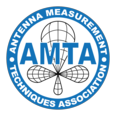James Maloney,John Schultz, Brian Shirley, November 2015
In the late 1990’s, Maloney et al. began investigating the design of highly pixelated apertures whose physical shape and size are optimized using genetic algorithms (GA) and full-wave computational electromagnetic simulation tools (i.e. FDTD) to best meet the required antenna performance specification; i.e. gain, bandwidth, polarization, pattern, etc. [1-3]. Visual inspection of the optimal designs showed that the metallic pixels formed many connected and disconnected fragments. Hence, they coined the term Fragmented Aperture Antennas for this new class of antennas. A detailed description of the Georgia Tech design approach is disclosed in [4]. Since then, other research groups have been successfully designing fragmented aperture antennas for other applications, see [5-6] for two examples. However, the original fragmented design approach suffers from two major deficiencies. First, the placement of pixels on a generalized, rectilinear grid leads to the problem of diagonal touching. That is, pixels that touch diagonally lead to poor measurement/model agreement. Other research groups are also grappling with this diagonal touching issue [7]. Second, the convergence in the GA stage of the design process is poor for high pixel count apertures (>>100). This paper will present solutions to both of these shortcomings. First, alternate approaches to the discretization of the aperture area that inherently avoid diagonal touching will be presented. Second, an improvement to the usual GA mutation step that improves convergence for large pixel count fragmented aperture designs will be presented. Over the last few years, the authors have been involved with developing the use of the focused beam measurement system to measure antenna properties such as gain and pattern [8]. A series of improved, fragmented aperture antenna designs will be measured with the Compass Tech Focused Beam System and compared with the design predictions to validate the designs. References: [1] J. G. Maloney, M. P. Kesler, P. H. Harms, T. L. Fountain and G. S. Smith, “The fragmented aperture antenna: FDTD analysis and measurement”, Proc. ICAP/JINA Conf. Antennas and Propagation, 2000, pg. 93. [2] J. G. Maloney, M. P. Kesler, L. M. Lust, L. N. Pringle, T. L. Fountain, and P. H. Harms, “Switched Fragmented Aperture Antennas”, in Proc. 2000 IEEE Antennas and Propagations Symposium, Salt Lake City, 2000, pp. 310-313. [3] P. Friederich, L. Pringle, L. Fountain, P. Harms, D. Denison, E. Kuster, S. Blalock, G. Smith, J. Maloney and M. Kesler, “A new class of broadband planar apertures,” Proc. 2001 Antenna Applications Symp, Sep 19, 2001, pp. 561-587. [4] J. G. Maloney, M. P. Kesler, P. H. Harms and G. S. Smith, “Fragmented aperture antennas and broadband antenna ground planes,” U. S. Patent # 6323809, Nov 27, 2001. [5] N. Herscovici, J. Ginn, T. Donisi, B. Tomasic, “A fragmented aperture-coupled microstrip antenna,” Proc. 2008 Antennas and Propagation Symp, July 2008, pp. 1-4. [6] B. Thors, H. Steyskal, H. Holter, “Broad-band fragmented aperture phased array element design using genetic algorithms,” IEEE Trans. Antennas Propagation, Vol. 53.10, 2005, pp. 3280-3287. [7] A. Ellgardt, P. Persson, “Characteristics of a broad-band wide-scan fragmented aperture phased array antenna”, EuCAP 2006, Nov 2006, pp. 1-5. [8] J. Maloney, J. Fraley, M. Habib, J. Schultz, K. C. Maloney, “Focused Beam Measurement of Antenna Gain Patterns”, AMTA, 2012
